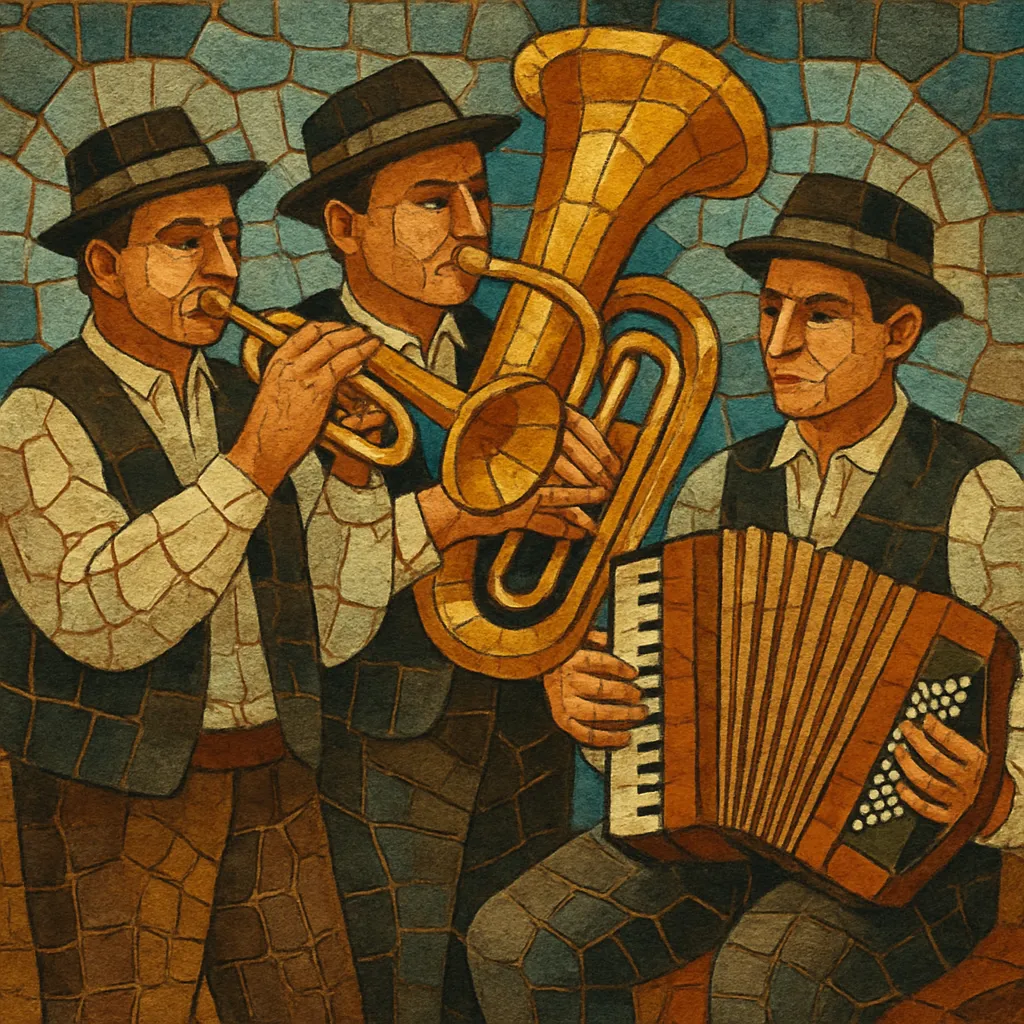Dechovka (dechová hudba) is the Czech and Moravian brass-band tradition built around lively polkas, lyrical waltzes, and festive marches. It features a characteristic oom‑pah pulse, singable melodies, and warm flugelhorn and clarinet lines, supported by tenorhorns/euphoniums, trombones, tuba, and light percussion.
Rooted in local folk dance forms and the Austro‑Hungarian band culture of the late 19th and early 20th centuries, dechovka developed both as outdoor festival music and as intimate community entertainment. Songs often celebrate village life, love, seasonal festivities, and beer-hall camaraderie, typically performed by uniformed brass bands and frequently with duet vocals.
Stylistically, dechovka balances clarity and charm: simple diatonic harmonies, buoyant rhythms, and memorable tunes, arranged so that melody instruments (flugelhorns/křídlovky, clarinets) sing above a solid oom‑pah foundation from tuba and low brass.
Dechovka emerged in the Czech lands (Bohemia and Moravia) in the late 1800s, when village folk dance repertories (especially polka and waltz) intersected with military and civic band traditions of the Austro‑Hungarian Empire. Local ensembles adapted the oom‑pah underlay and standardized brass instrumentation, creating a distinctly Czech sound that could animate dances, fairs, and town celebrations.
Key early bandleaders and composers like František Kmoch helped codify a repertoire and performance practice that centered on melody-forward arrangements, balanced brass choirs, and convivial community function.
During the interwar years of Czechoslovakia, dechovka flourished via radio, sheet music, and regional band networks. Jaromír Vejvoda’s "Škoda lásky" (Beer Barrel Polka) became an international hit in the 1930s, projecting the Czech polka/brass aesthetic far beyond Central Europe and cementing the genre’s exportable appeal.
After World War II, state cultural institutions, festivals, and broadcasting supported brass bands and community music-making. The repertoire expanded with new polkas, waltzes, and marches by composers such as Josef Poncar and Ladislav Kubeš, while professional and semi‑professional ensembles raised performance standards. Festivals like Kmochův Kolín sustained intergenerational interest and professionalized the scene.
Following 1989, dechovka persisted through festivals, regional ensembles, television/radio shows, and recordings. It remains a living tradition in the Czech Republic and neighboring countries, with strong ties to related Central European brass and dance styles (e.g., German/Austrian Blasmusik and Slovene narodnozabavna). Modern bands maintain classic repertoire while commissioning new pieces that honor the idiom’s melodic warmth and social function.


